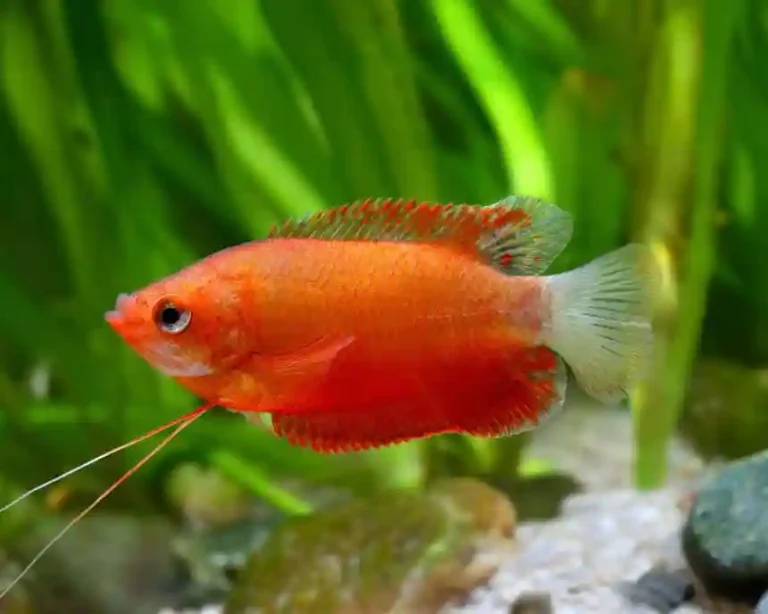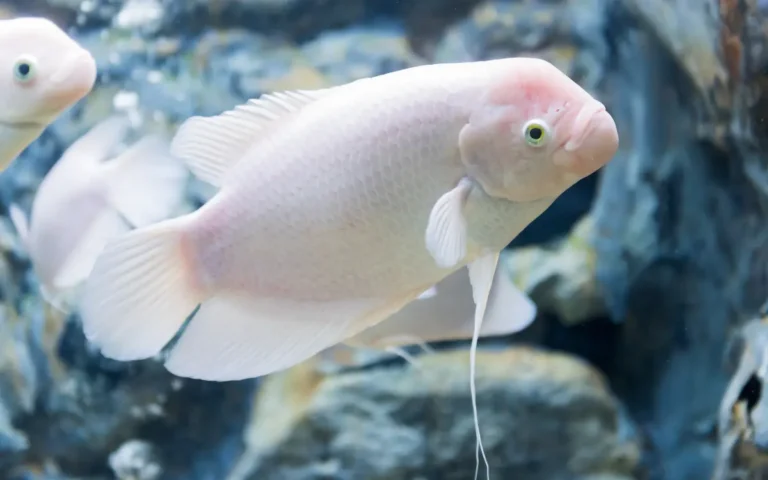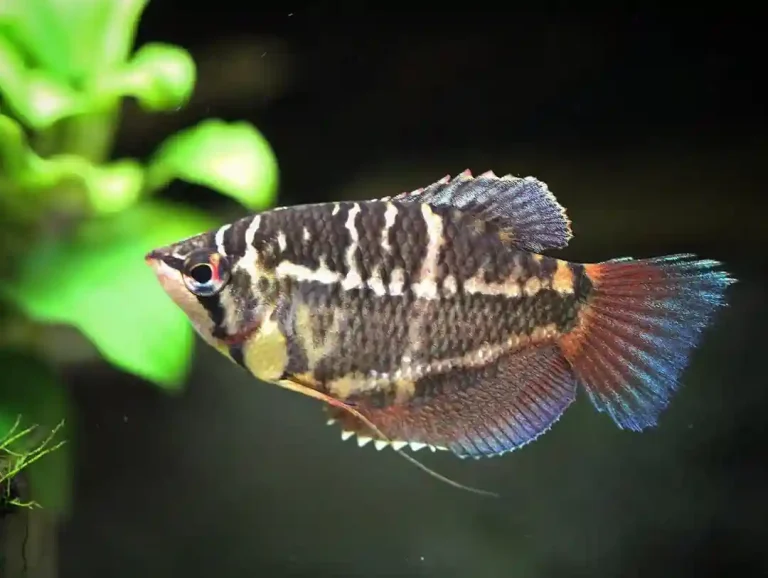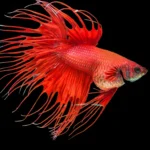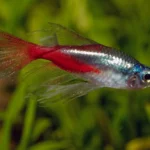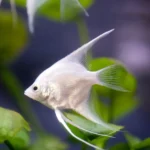Kissing Gouramis are one of the most unique freshwater fish you can keep—famous for their puckered lips and bold personality. But beyond their odd “kissing” behavior lies a surprisingly large and semi-aggressive fish that needs the right care, space, and tank setup to thrive.
In this guide, we’ll walk you through everything you need to know about Kissing Gouramis, from their ideal tank conditions to their behavior and compatibility with other fish.

Quick Overview of the Kissing Gourami
- Scientific Name: Helostoma temminckii
- Common Names: Kisser Fish, Pink Gourami
- Origin: Thailand, Indonesia, Malaysia
- Lifespan: 6–8 years (can live over 10 years with proper care)
- Adult Size: Up to 12 inches
- Temperament: Semi-aggressive
Kissing Gouramis are not your average community fish. Their “kissing” isn’t romantic—it’s usually a way of showing dominance or establishing territory.
Want more beginner-friendly fish? Check out our full Freshwater Fish Guide
What Do Kissing Gouramis Look Like?
Kissing Gouramis have a tall, laterally compressed body with thick, rubbery lips that constantly pucker. They come in two main color varieties:
- Pink (albino) – most common in the aquarium trade
- Greenish-silver (wild type) – less common but more natural-looking
Their lips are specially designed for scraping algae off surfaces—and sometimes sparring with tank mates.
How Big Do Kissing Gouramis Get?
Don’t let their juvenile size fool you. Kissing Gouramis grow fast and can reach:
- Average size: 8–10 inches
- Maximum size: 12 inches in a spacious tank
- Growth rate: Fast, especially in well-maintained tanks
Because of their adult size, they’re not suitable for small aquariums or beginner setups without long-term planning.
Tank Setup for Kissing Gouramis
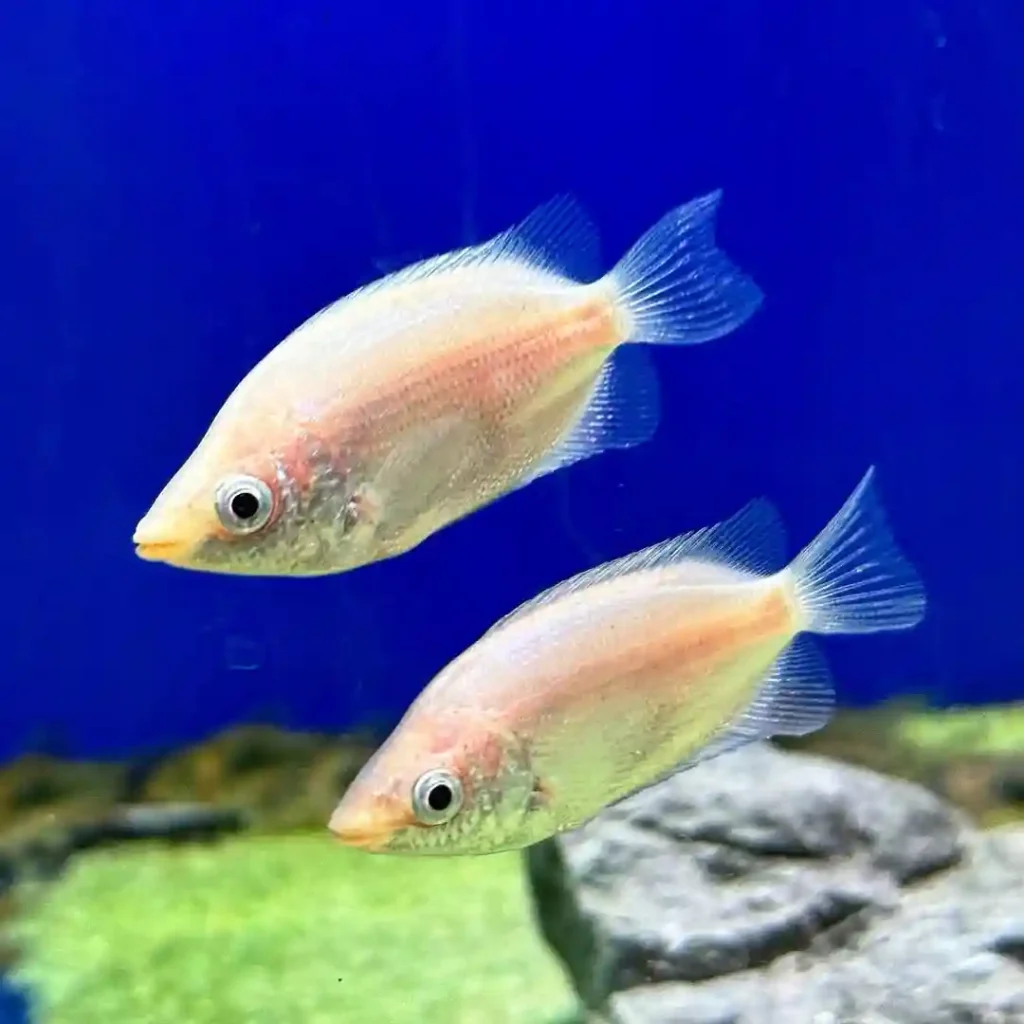
Minimum Tank Size
- Single Kissing Gourami: 55 gallons
- Pair or Community: 75+ gallons
They need plenty of swimming space and vertical room to breathe at the surface.
Water Parameters
| Condition | Ideal Range |
| Temperature | 72–82°F (22–28°C) |
| pH | 6.8–8.5 |
| Hardness | 5–20 dGH |
Their labyrinth organ allows them to breathe from the surface, so make sure the top of the tank is accessible and not completely sealed off.
Filtration and Flow
- Use a strong filter to handle their waste output
- Keep water flow moderate—avoid strong currents
- Clean water is crucial for long-term health
Lighting and Substrate
- Standard lighting is fine—avoid intense brightness
- Use gravel or sand substrate
- You can also include Aquarium Substrate designed for planted tanks
Plants and Decorations
- Use sturdy plants like Java Fern or Anubias
- Floating plants like Amazon Frogbit help diffuse light
- Add driftwood and smooth rocks to break line of sight
Kissing Gourami Behavior and Compatibility
Kissing Gouramis can be peaceful when young, but as they mature, their personality changes.
Typical Behavior
- Males may “kiss” (lock lips) to assert dominance
- Can become territorial and chase tank mates
- Intelligent and active swimmers—curious about their surroundings
Good Tank Mates
Kissing Gouramis are best kept with other medium to large, fast-swimming fish:
- Bala Sharks
- Rainbowfish
- Silver Dollars
- Large Tetras
- Loaches
- Plecos
Avoid keeping them with small, delicate, or long-finned species like Guppies, Bettas, or Angelfish.
Thinking about Betta fish? Read our Betta Fish Tank Mates Guide
Feeding Kissing Gouramis
Diet Type:
- Omnivorous, but mostly plant-based
What to Feed:
- Spirulina flakes
- Algae wafers
- Blanched vegetables (zucchini, spinach)
- Occasional frozen foods (bloodworms, brine shrimp)
Feeding Tips:
- Feed once or twice a day
- Only offer what they can finish in 2–3 minutes
- Overfeeding leads to bloating and dirty water
Want more? Read our Feeding Aquarium Fish Guide
Breeding Kissing Gouramis
Breeding them in home aquariums is tricky due to their large size and specific conditions.
- They are egg scatterers and don’t provide parental care
- Need a large, heavily planted breeding tank
- Increase temperature to 80–82°F to trigger spawning
- Remove adults after spawning to protect the eggs
Common Health Issues
Despite being hardy, Kissing Gouramis are prone to a few issues:
| Health Issue | Signs | Prevention |
| Ich | White spots, flashing | Maintain stable temp and water quality |
| Fin Rot | Frayed fins, discoloration | Avoid aggression and dirty water |
| Bloating | Swollen belly | Avoid overfeeding |
| Lip Injury | Sores on lips | Caused by frequent sparring |
Quarantine new fish and test water regularly to prevent outbreaks.
Need a separate tank for sick fish? Learn How to Set Up a Quarantine Tank
Is the Kissing Gourami Right for You?
If you have a large tank, are prepared for some territorial behavior, and want an unusual centerpiece fish, the Kissing Gourami might be a great fit.
They’re not ideal for:
- Small aquariums
- Mixed nano communities
- Owners who want peaceful, low-maintenance fish
But with the right care and setup, they’re bold, active, and incredibly entertaining to watch.
FAQs
Why do Kissing Gouramis kiss?
That “kiss” is actually a show of dominance between males. It’s a harmless but competitive behavior.
Can Kissing Gouramis live alone?
Yes. They don’t need to be in a group and can be kept solo, provided they have a large enough tank.
Do Kissing Gouramis eat live plants?
Sometimes. They may nibble at soft or tender plants, so stick to hardy species.
How long do Kissing Gouramis live?
With proper care, they typically live 6–8 years, sometimes over 10.
Do Kissing Gouramis need a heater?
Yes. They are tropical fish and thrive in stable temperatures between 72–82°F.
Final Thoughts
Kissing Gouramis are unusual fish with big personalities. Their unique look, active behavior, and semi-aggressive nature make them best suited for experienced aquarists or those with large, well-planned tanks.
Ready to build a tank for your Kissing Gourami?
Start with our Aquascaping for Beginners Guide

